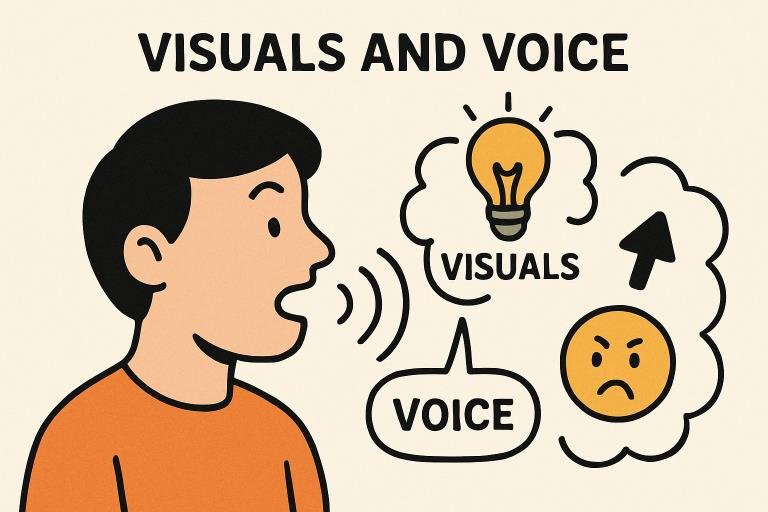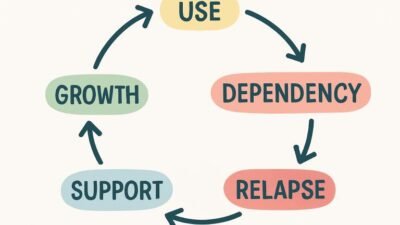Clear and effective communication relies on much more than just spoken words. The way we use our voices—through tone, pitch, and volume—transforms the message, while visual elements add meaning and depth to it. Unlocking the interplay between illustrations and vocal cues is essential for impactful messages, whether in the classroom, boardroom, or digital media. Individuals working on enhancing their expression, such as those in monotone speech therapy, often benefit from harnessing visual cues to enrich their vocal delivery and engage listeners more fully. Integrating illustrations with vocal cues not only supports comprehension but fosters deeper engagement, helping audiences absorb complex material or respond emotionally to a narrative. This synergy can be found everywhere—from animated storytelling to live presentations—demonstrating the universal value of aligning what is seen with what is heard.
Understanding Vocal Cues
Vocal cues are the subtle signals embedded in how we speak: our intonation, pitch variations, rhythm, and even pauses. These cues convey underlying emotions, intent, and context—communicating far more than literal meanings alone. For instance, a cheerful rise in pitch typically signals excitement or happiness, while a flat monotone might reflect boredom, fatigue, or a deliberate attempt to remain neutral. The importance of these elements is underscored in fields such as healthcare, law enforcement, and education, where accurately interpreting vocal cues can shape outcomes and experiences.
Role of Illustrations in Communication
Illustrations provide an immediate, visual context that enhances auditory information. Whether it’s a diagram clarifying a scientific process or an expressive cartoon character mirroring a narrative, visuals help bridge the gap between spoken word and comprehension. They allow abstract ideas to become tangible, making communication more effective for diverse audiences, including children, individuals with learning differences, and non-native speakers. By bridging cultural and linguistic divides, illustrations often deliver messages that transcend barriers created by language alone. Their role is especially critical in settings where words may be misunderstood or overlooked—consider global advertising campaigns or multi-language safety signage as prime examples.
Synchronizing Visuals and Voice
The true power of communication emerges when vocal and visual cues are in harmony. For example, during a presentation, an upward inflection paired with a rising arrow graphic can energize the audience and emphasize optimism or growth. Conversely, a calm, soft-spoken phrase alongside serene imagery can foster tranquility or empathy. This synchronization is central to multimedia learning models, where congruent visuals and audio narratives foster better memory retention and understanding. Storytelling is another domain where this interplay is particularly evident. Podcasts and animated films skillfully match character illustrations with vocal performances, letting viewers instantly connect emotion and intent—making stories more immersive and memorable.
Practical Applications in Education
Multimodal learning, which blends visual and vocal elements, caters to a range of learning preferences. Illustrated textbooks, interactive e-learning modules, and video lessons all exploit the partnership between voice and visuals to bolster student engagement. For example, a teacher might use infographics to explain a historical event while modulating vocal pitch to highlight key points, drawing students into the narrative.
Research consistently finds that this approach leads to improved comprehension and recall. Students who process information through both auditory and visual channels are better equipped to grasp and apply complex ideas, making these techniques invaluable in inclusive and differentiated instruction.
Impact on Media and Entertainment
The synergy between visuals and voice is especially apparent in media and entertainment. Animated films rely on precise synchronization between character facial expressions, gestures, and actor vocal performances to transmit nuanced emotions. Video games blend rich graphics with interactive voice acting, creating worlds that pull players in emotionally and cognitively. In journalism and digital content creation, illustrations, infographics, and expressive voice-overs can transform abstract data or breaking news into stories that resonate with diverse audiences and capture their attention in an information-rich age.
Challenges and Considerations
Despite its benefits, synchronizing visuals with voice presents challenges. Cultural differences can make certain illustrations or vocal tones ineffective, confusing, or even offensive in global communications. An overuse of visuals may also overwhelm rather than support an auditory message, diminishing the intended impact. Balance, cultural awareness, and thoughtful design are essential to avoid these pitfalls and maximize the advantages of integrated communication strategies. Communicators should strive for a synergy that aids, rather than distracts from, their message—being mindful of accessibility, diverse needs, and the risk of oversaturation.
Conclusion
The seamless blend of illustrations and vocal cues holds remarkable power for enhancing communication in education, media, and everyday interactions. By aligning what audiences see with how messages are delivered, communicators can evoke emotional resonance, build understanding, and drive engagement in ways that words alone rarely achieve. As digital tools and multimedia technologies continue to evolve, new possibilities for innovative storytelling and instruction will emerge, pointing to a dynamic, visually rich future for human expression.



